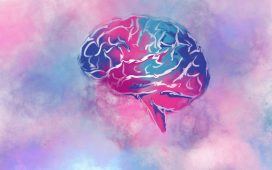Resilient adolescent females have greater connectivity within frontal and limbic networks
FRIDAY, March 23, 2018 (HealthDay News) — Adolescent females at high familial risk of depression who do not go on to develop depression have compensatory functional connectivity patterns in emotion regulatory networks, according to a study published online March 21 in JAMA Psychiatry.
Adina S. Fischer, M.D., Ph.D., from Stanford University in California, and colleagues examined neural functional connectivity correlates of resilience in 65 adolescent females at high and low familial risk for depression. Twenty were at high risk and did not develop depression (resilient), 20 were at high risk and did develop depression (converted), and 25 were at low risk with no history of psychopathology (control).
The researchers found that compared with converted adolescent females, those in the resilient group had greater connectivity between the amygdala and orbitofrontal cortex and between the dorsolateral prefrontal cortex and frontotemporal regions. In the resilient group only, there was a correlation for strength of amygdala-orbitofrontal cortex connectivity with positive life events. Greater connectivity was seen within frontal and limbic networks for resilient adolescent females versus controls. Greater salience network connectivity was seen for both high-risk groups: the converted group had greater intranetwork connectivity than the resilient and control groups; the resilient group had greater salience network connectivity with the superior frontal gyrus than the converted group.
“Further studies are warranted concerning connectivity-associated targets for promoting resilience in high-risk individuals,” the authors write.
Abstract/Full Text (subscription or payment may be required)
Editorial (subscription or payment may be required)
Copyright © 2018 HealthDay. All rights reserved.








